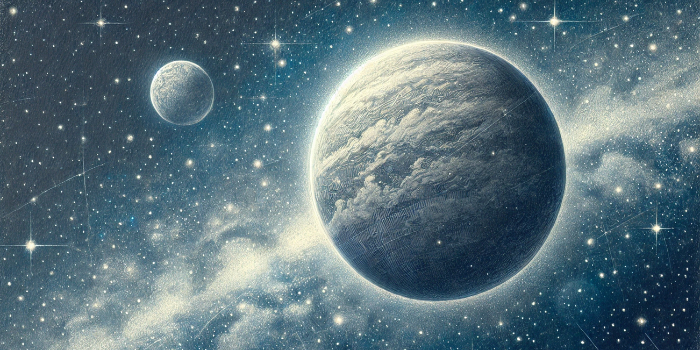| 2025: Best Planetary Conjunctions (2024-12-22) ⬅︎ |
 |
Have you ever noticed that the planets, Moon and Sun seem to move in a specific path across the sky? It’s called the ecliptic, and it’s like a giant arc that stretches from west to east and wraps around our planet.
Now, here’s something cool about the ecliptic: the planets, Moon and Sun, seem to travel at different speeds along it. The Moon is the fastest, zipping around in just 30 days. The Sun takes a whole year, Venus takes 584 days, and Mars takes 780 days. Jupiter and Saturn are like the slowpokes, taking many years to complete their journey. But the slowest planet is Neptune, taking a whopping 165 years!
So, here’s the big idea: the faster planets eventually catch up to and pass the slower ones and, when they do, they can get close to each other. How close? By definition, only the Sun travels exactly on the ecliptic. The others travel just close to it — usually within ten degrees (the width of a fist at arm’s length). So, when one planet passes another, they may be several degrees apart -- not real close.
On rare occasions, though, two planets can appear very close, just one degree or two apart and even less. We call these events planetary conjunctions. The planets become like cosmic dancers in the sky swinging past each other!
But here’s something important to keep in mind: the planets are never actually close. They’re always far apart and only appear to be close when they happen to be in the same direction from us.
So, the next time you look up at the sky, keep an eye out for these planetary conjunctions. They’re a sight to behold, and they’re a reminder of the incredible wonders of our universe.
If you'd like to plan to view planetary conjunctions , here are details on the three best ones in 2025:
🌟 Jan 18: Venus and Saturn Conjunction, 2°
On the evening of January 18th, Venus will be passing Saturn in the sky. Look in evening in the SW direction from 5:23 PM to 9:02 PM. Venus is super bright and easy to spot, while Saturn is quite a bit fainter though still easy to see naked-eye. They’ll be just 2° apart on this day but they'll be fairly close to each other from January 7th to January 30th. For more info on the Jan 18 conjunction, see Venus
and Saturn
🌟 Jul 8: Saturn and Neptune Conjunction, < 1°
On July 8th, Saturn will be passing Neptune at less than 1 degree apart. Look in evening in the SE direction from 12:19 AM to 4:46 AM. Since they both move so slowly in our sky, they’ll actually be fairly close Jun 26th to Jul 17th. This is a big window of opportunity for stargazers!
Now, Saturn is pretty easy to spot with the naked eye. It’s bright with a magnitude of +1.0. But Neptune is a bit of a challenge. It’s very dim with a magnitude of +7.9, which means it’s over 500 times dimmer than Saturn! So, you’ll need a binocular or telescope to see it, and you’ll need to find a time when the Moon isn’t shining brightly since its glare will make it hard to see Neptune.
But don’t worry, Neptune will be right next to Saturn, so it’ll be super easy to find. Just point your binocular or telescope to Saturn and look for a pale-blue ‘fuzzy star’ nearby. That’s Neptune!
For more info on the Jul 8 conjunction, see Saturn
and Neptune
🌟 Aug 11: Venus and Jupiter Conjunction, < 1°
On the evening of August 11th, Venus will be passing Jupiter super close along the ecliptic — under 1°. Look in evening in the E direction from 3:09 AM to 5:29 AM. This might just be the best planetary conjunction of 2025, and it’s all thanks to their incredible brightness.
Venus is the brightest planet out there, and it’s super easy to spot. It’ll be shining like a diamond with a magnitude of -4.0. Jupiter, the second brightest, is also a sight to behold. It’ll be shining at magnitude -1.9, about 7 times less bright.
Venus and Jupiter will be within 10 degrees of each other in our sky from August 1st to August 21st. It’s going to be a celestial spectacle you won’t want to miss!
As you can clearly see in the diagram below, Venus and Jupiter will actually be far from each other during the conjunction.
For more info on the Aug 11 conjunction, see Venus
and Jupiter
|
| |



